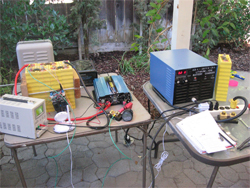
Categories
- Home
- Automotive Exhaust Ventilation
- Exhaust Fan Ventilation
- Exhaust Ventilation Fan
- Exhaust Ventilation Fans
- Exhaust Ventilation FAQs
- Exhaust Ventilation Hose
- Exhaust Ventilation System
- Garage Exhaust Ventilation
- Garage Exhaust Ventilation System
- General Exhaust Ventilation
- Local Exhaust Ventilation Definition
- Local Exhaust Ventilation Design
- Local Exhaust Ventilation Suppliers
- Local Exhaust Ventilation Systems
- Local Exhaust Ventilation Testing
- Mechanical Exhaust Ventilation Systems
- Portable Local Exhaust Ventilation
- Shop Exhaust Ventilation System
- Vehicle Exhaust Ventilation System
- Ventilation Exhaust Fan
- Ventilation Exhaust Fans
- Ventilation Exhaust Systems
- Welding Exhaust Ventilation
Local Exhaust Ventilation Testing
When it comes to the health and well being of you and your employees, you simply cannot afford to take any risks. The air in the workplace can be particularly prone to various pollutants and contaminants. Even if you already have a satisfactory air cleaning and ventilation system in place, you will have to ensure that it is running in optimal condition. This is where the importance of local exhaust ventilation testing comes to the fore.
The purpose of exhaust ventilation testing
Local exhaust ventilation testing or LEV testing refers to engineering control system that is employed for the purposes of reducing human exposures to contaminants in the air. These contaminants may come in the form of:- dust
- mist
- fumes
- vapors
- gasses
In most countries around the world, it is the employer’s responsibility to implement and maintain the proper control measures in the workplace. One of the most important aspects of this responsibility is to significantly reduce the contaminant level in the air, if not eliminate all contaminants entirely. And for these purposes, local exhaust ventilation testing is absolutely essential.
Local exhaust ventilation testing is a commonly implemented measure that aims to capture pollutants right at the source. Like all control measures, LEV must be inspected and tested on a regular basis, making sure that it conforms to all the guidelines and standards set by the HS(G)258, which deals with the issues pertaining to the control of airborne contaminants in the workplace.
What exhaust ventilation testing involves
Local exhaust ventilation testing involves three key steps:- A visual examination of the ventilation system
- Measurement of its technical performance
- Assessment of the control system
The steps of exhaust ventilation testing
The visual examination part of local exhaust ventilation testing is intended to verify that the equipment is indeed in good working condition and that it is sufficiently clean. This part of the process involves examining the various components carefully for any signs of damage or wear.The measurement stage of local exhaust ventilation testing involves gauging the technical performance of the equipment with regard to its conformance with industry standards. During this part of the procedure, the air velocity is tested at various points in the ventilation system including the hood and ducts. Among the other features tested are the fan and motor speed, and the electrical consumption of the entire system.
The third stage of local exhaust ventilation testing involves an assessment of worker exposure to contaminants. This part of the process may involve an extensive smoke testing procedure, as well as a check of the smoke alarms to ensure that they are activated when smoke is present.
Back to Top
